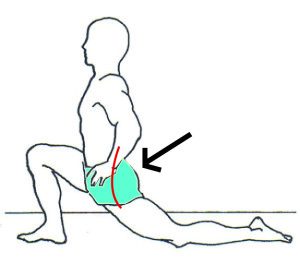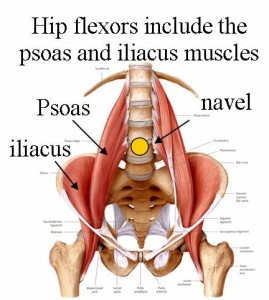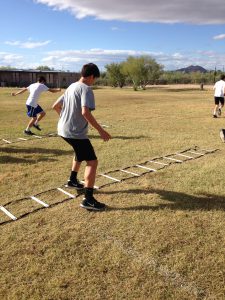Check your hips for back pain
Your low back pain may be coming from your hips
Having back pain is miserable, and not knowing why you might have back pain can be frustrating. Often in treatment people focus purely on the back muscles, and getting very little relief. This may be because they are focusing on the wrong muscle groups that may be causing your lower back pain. In some cases the hip flexors may be causing your low back pain (see diagram below).
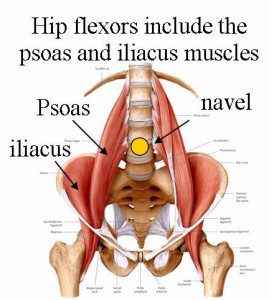
The hip flexors include the Psoas muscle which is a large muscle that originates at the lower levels of the lumbar spine and attaches to the femur. Because the Psoas muscle originates at the lumbar spine, it can often be the root cause of your low back pain.
How do the hip flexors and more specifically your Psoas muscle cause low back pain?
Consider this, you spend most of your day with your hips in a flexed position, from sitting, sleeping (when side-lying), and even in exercising. By putting your hip flexor muscles in a shortened position for long periods of time you eventually tighten this muscle so when you are standing or laying flat on your back with legs fully extended, you may experience back pain.
How to test if your Psoas muscle is tight
A simple test anyone can do is to lay flat on your back with legs fully extended. How does this position feel? Now, while laying flat on your back raise your knees while keeping your feet flat on the surface you are lying on. Does this position feel better? If so, this is a good sign that your Psoas muscle is tight.
How to stretch the Psoas muscle
Because the Psoas muscle is so deep it is very difficult to get to and isolate when stretching. If you try these stretches and don’t get relief, seek a physical therapist.
Try the following stretches based on tolerance:
Supine single knee to chest – Keep one leg straight, while laying on your back, and pull the opposite knee to your chest. Do not let the straight leg flex at the hip. Stretch should be mild. Hold for 30 seconds for 3 repetitions. This is a good stretch to start with for the hip flexors. Once you feel that you can tolerate easily, progress to supine leg drop.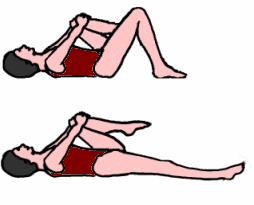
Supine leg drop – Laying at the edge of a table or bed, drop one leg over the edge so your hip is able to extend. Pull the opposite knee to your chest. Stretch should be moderate. Hold for 30 seconds for 3 repetitions. Once you feel that you can tolerate easily, progress to kneeling hip flexor stretch.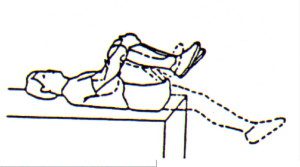
Kneeling hip flexor stretch – From a kneeling position, place one foot flat on the ground directly ahead of you. Keep your other knee on the floor and press your hips forward. Stretch should be moderate to significant. Hold for 30 seconds for 3 repetitions. The stretch intensity can be controlled by adjusting how much you lean forward into the stretch.